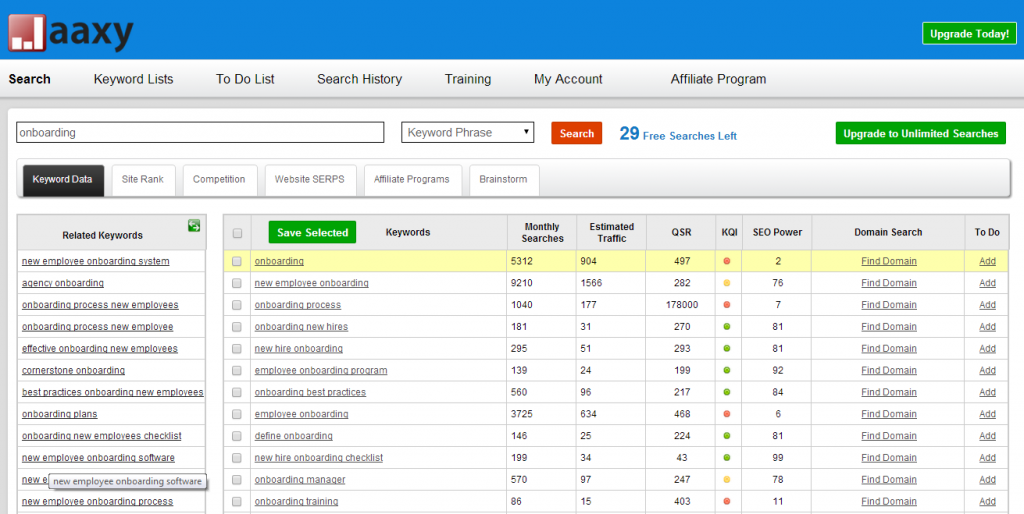Going Corporate: How to Market Your Training Business to Large Companies & Corporations

Photo Credit: Christopher Michel, published under CC.
Working for a large company or corporation as an employee has certain benefits. The pay is good and there’s usually room to change jobs – without having to update your resume or going for a job search. Much the same goes for selling your training services to large companies and corporations. Once you’re in, you get paid decently and there’s always more work.
But how do you get in? How do you market your training business to large companies and corporations? Here are 5 tactics to get you started.
- Be Yourself, Don’t Pretend to Be Big
- Build Social Proof First
- Identify Decision Makers
- Don’t Do Freebies
- Accountability Is Extremely Important
Be Yourself (Don’t Pretend to Be Big)
If you’re a very small training company, you may be tempted to project a much bigger image, or simply to pretend you’re a big company. After all, this is very easy nowadays. Just create a very well designed, very professional looking website. Use a phone answering service. Say ‘we’ all the time instead of ‘I’.
But don’t fool yourself, if you actually start working with a customer, they will find out your company’s size at some point. Besides, if they ask you directly “How many employees does your company have?” – and some customers will ask you exactly that – what are you going to do? Lie about it?
Big corporations who are willing to cooperate with individual trainers or small training companies don’t care about a ‘big’ image. They’ve already weighed all the pros and cons. So, be upfront about it and put your picture on your website. Because by introducing a human element, you’re actually turning a self-perceived weakness into a strength. You’re not some large training company where the customer never knows who the trainer is going to be for the next training. Your customer will actually get to know you. They will even get to rely on you personally.
Build Social Proof And Authority First

Photo Credit: Drew Avery, published under CC.
To gain the trust of bigger customers, who have the financial means to pick any trainer in the world, you need to build social proof first. It’s very unlikely that any unknown trainer marching into a big office building is going to gain a new customer right then and there.
Of course, if you’re actually not unknown, e.g. you have previously worked for a big company as an employed trainer, that is great. Use that connection to get hired back as an independent trainer. That’s all the social proof you need if you start calling other big companies.
Otherwise, start small. It’s generally easier to get to talk to the right people in smaller companies. Go there first, do a few successful training sessions, then ask for references. Collect customer stories, work on a few case studies. Once you’ve got your act completely together you then present yourself to bigger companies, showing them the value that you can add.
Find an Intermediary
Can’t get your foot in the door? Consider working for training and consulting companies as a private contractor. Obviously you have to pick a training company that sends you out to a large company or corporation. Try to find out how the training company is able to land deals with corporations. If the training company is a small one, you may be able to copy (i.e. learn from) their marketing and sales tactics. If they’re a pretty big company themselves, though, you won’t learn much that’s relevant to you as a small contractor.
To be absolutely clear here: you’re doing this to gain experience in marketing and sales and to get your name out. But you cannot pick up customers from the intermediary training company. You’d have your name out for sure, but in a very, very bad way.
Establish Authority
To get your name out in a positive way, it helps tremendously to establish yourself as an authority in your field. You do this by speaking at conferences. Nowadays, you can also use social media like LinkedIn. If you know which LinkedIn groups your potential customers are visiting, get involved there. Contribute to discussions and then start interesting new discussions.
One very effective way to launch yourself as an authority is by writing a book. If your book is even slightly successful, you’ll find that previously closed corporate doors will now open. In fact, you may hit a point where people won’t call you any more because they’re assuming you’re too busy. (How ironic is that?)
Identify Decision Makers

Photo Credit: Christopher Michel, published under CC.
Based on your specialty, create a list of suitable corporate companies where you can add the most value. Visit their websites to see if they publish the names of decision makers. For training they might be hr managers. Maybe they are listed in the jobs section of the site, under ‘recruiting’ or ‘career’. If you’ve got a few names, it’s time to put on your private investigator hat. Try to find them online. See if they have published their email address anywhere. Maybe they’re visiting the same LinkedIn groups as you do.
Once you’ve got their contact data, send them a message (either through email or through LinkedIn) and try to get on the phone with them. At this stage, you must have your customer stories and case studies at hand.
Of course, both online and offline, the best introduction is one made by a mutual acquaintance. Ask you current customers if they know anybody else who would benefit from your training services.
Don’t Do Freebies
If you’re just starting out, especially if you’re younger, you’re guaranteed to encounter this situation. You call a decision maker in a corporation, let’s say a bank. And lo and behold, you’re actually invited for a meeting. You get there very well prepared and you have a nice conversation about the value you can add through your training. In other words: you both agree that your training solves a real problem. The hr manager smiles and nods.
Then you bring up the topic of compensation. Now the manager says: “We can’t pay you. You should be glad that you get to work for us, so you can get a reference from us. Being able to mention our brand name is a great opportunity for your career and your business.”
Don’t fall for this. Nor for any other requests for freebies. If they think your training adds value, they’ll be willing to pay for it too. Otherwise, why would they waste their employees’ time with your training?
Accountability Is Extremely Important

Photo Credit: McKay Savage, published under CC.
The people who are hiring you, presumably the ones you identified as decision makers, are taking a risk on you. Make sure that you don’t disappoint them. What’s more, provide them with evidence that you have added value for the company, that you have solved their problem.
Ideally, you start with a pre-test to measure current skills and knowledge. During the training sessions, keep accurate attendance records. After the training, test the trainees’ skills and knowledge again. If you don’t see enough of an improvement, try to pinpoint the problem and discuss it openly. This is something you should do for all types of customers, but corporate managers will want to see detailed reports from you (even if they don’t always actually read them). So, make sure that you can provide those reports.
3 comments












